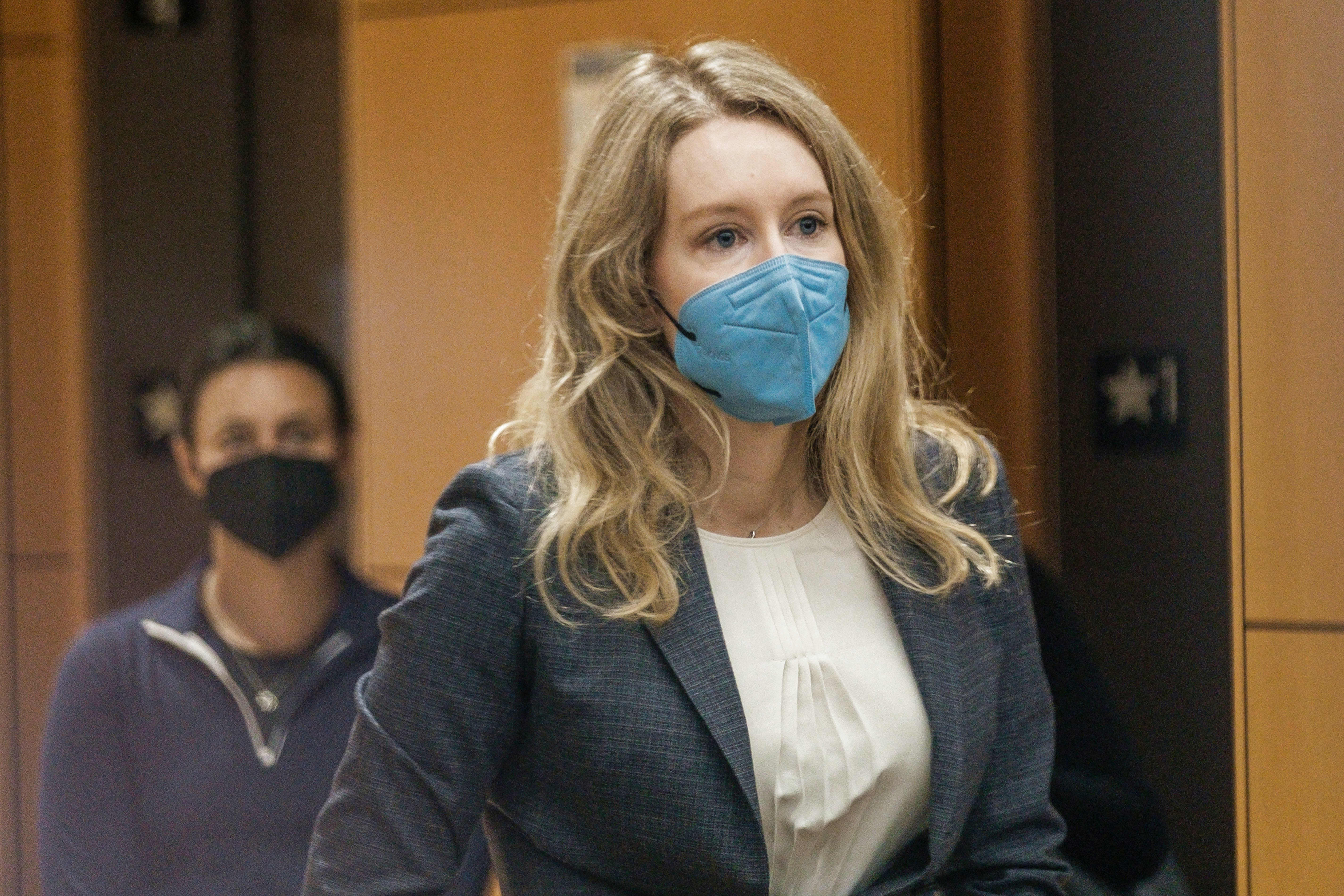SAN JOSE, CALIF — A smiling Elizabeth Holmes took the stand on Friday to testify in her criminal trial, a sudden and surprising move by the defense team, which began its case earlier in the day.
Holmes, 37, faces 11 counts of wire fraud and conspiracy to commit wire fraud for her actions as founder and CEO of Theranos, which she led from 2003 until the company shut down in 2018. She pleaded not guilty.
In the 11 weeks since her trial began, the prosecution called 29 witnesses, including former lab directors, patients, doctors, business partners and investors. The government rested its case on Friday morning, following the testimony on Thursday of journalist Roger Parloff, who wrote the 2014 Fortune magazine cover story, “This CEO Is Out For Blood,” profiling Holmes.
Defense lawyers hadn’t indicated whether Holmes would take the stand. But she was called and walked up confidently shortly after 3 p.m. California time.
Kevin Downey, one of her defense attorneys, began the questioning. In one of her first statements, Holmes said that between 2009 and 2010, her team made a technological breakthrough.
“We worked for years with teams of scientists and engineers to miniaturize all of the technologies in the laboratory,” Holmes said.
Downey asked Holmes about her public pronouncements regarding how many tests Theranos could run and whether she was limiting her comments to certain types of tests. Holmes said, “No.”
Multiple company insiders, including whistleblower and former lab assistant Erika Cheung, testified that Theranos’ devices couldn’t run more than 12 different tests, which contradicted the company’s pronouncements. Holmes had told prospective investors and others that Theranos’ proprietary technology could run 1,000 blood tests.
Holmes walked through her background at Stanford and her decision to drop out and pursue her start-up. She said she initially called the company Real-Time Cures and changed the name to Theranos in 2005. She told jurors that she tried to raise some money, get a lab and hire scientists.
“We were prototyping,” Holmes said, adding that the early team was trying to build components of the technology. “I had the opportunity to hire some of the people I was working for and with at Stanford.”
This is breaking news. Please check back for updates.
